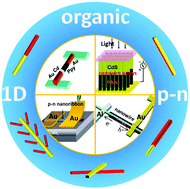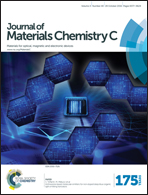Recent advances in one-dimensional organic p–n heterojunctions for optoelectronic device applications
Abstract
With the rapid development of organic electronics, one-dimensional (1D) organic p–n heterojunctions have attracted increasing interest because of their unique optoelectronic properties and potential as building blocks for sophisticated integrated circuits. Recently, significant progress has been made in the methods for synthesizing or fabricating 1D organic p–n heterojunctions, including two typical types of organic–organic heterojunctions and organic–inorganic heterojunctions. Various device applications have been demonstrated based on these 1D organic heterojunctions with new or enhanced optical and/or electrical properties. This MiniRev highlights the recent remarkable advances in this field with a concise summary of the various preparation methods such as solution process, physical vapor techniques, template and templateless methods, etc., to form segmented, cross-stacked, bilayer, and core–shelled structures. The potential applications of these 1D organic heterojunctions in optoelectronic devices, such as ambipolar transistors, photovoltaics, photodetectors and diodes, are demonstrated in the second part. Finally, the challenges and potential opportunities existing in this field are also deeply discussed.

- This article is part of the themed collection: 2016 Journal of Materials Chemistry C Hot Papers

 Please wait while we load your content...
Please wait while we load your content...